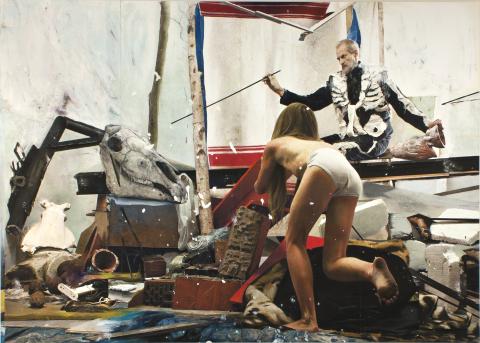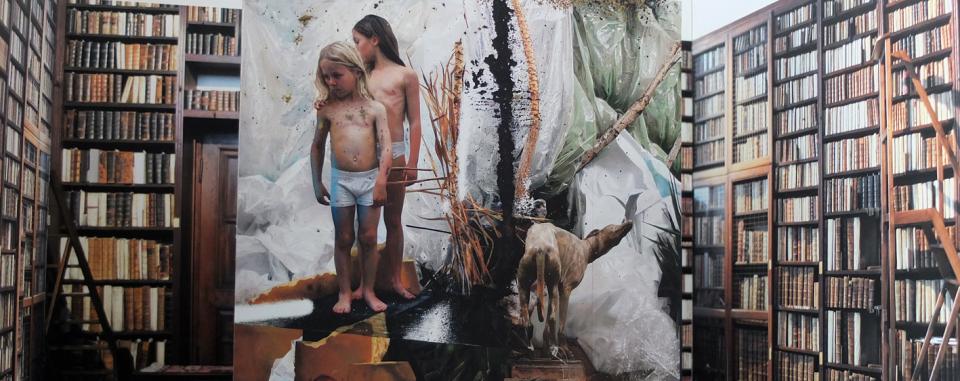The Pink Spy
With the series The Pink Spy (2013), Tordoir connects with the tradition of the late-baroque Venetian painter Battista Tiepolo, drawing especial inspiration from his Capricci and Scherzi series of engravings. The Pink Spy shows a world of strangers, outcast old people and bizarre figures on the fringes of society. Tordoir refers to the unsettled world to which we all belong. In this series, the ‘Oriental’ plays a linking role. He appears in Tiepolo and is also present in the work of Tordoir. In his elusive guises, the ‘Oriental’ is a metaphor for the artist, philosopher, poet and scientist.
The dog’s expression
For The Pink Spy, the Antwerp-based artist used a cast of figures to create a tableau vivant. In the Museum’s staged setting of The Pink Spy / Kids, you stumble across the plaster cast of a highly expressive dog, echoing the dog in the monumental painting. Tordoir’s quadruped is inspired by the dog in a drawing by Jacob Jordaens in the collection of the Plantin-Moretus Museum. Jordaens developed the dog in his painting Hunter with His Dogs in the collection of the Museum of Fine Arts in Lille.

Consumption and pollution
Pollution is implicitly addressed in the background of The Pink Spy / Kids. We see the excesses that result from our rampant consumerism. Next to the painting, Tordoir has placed two centuries-old lead blocks. One block is not affected by pollution, but the other is. One of the lead letter blocks is literally bursting at the seams: the corroded, toxic lead is transgressing the bounds of orderliness, suggesting the consequences of pollution, not just for people’s general health, but for the sustainability of our collective cultural heritage.
Four sketches for the Museum Plantin-Moretus
Drawings are visible traces of thinking. Sketches illustrate Tordoir’s efforts to bring his intentions into focus. This process involves ‘expressive’ actions which are rending – sometimes visibly and literally so. Torn pieces are stuck together, in their provisional state, with brightly coloured tape. These are fundamental artistic investigations of the ‘how’ and ‘what’ of an image which can lead, via preliminary studies, to a major, spiritually engaged art work.

